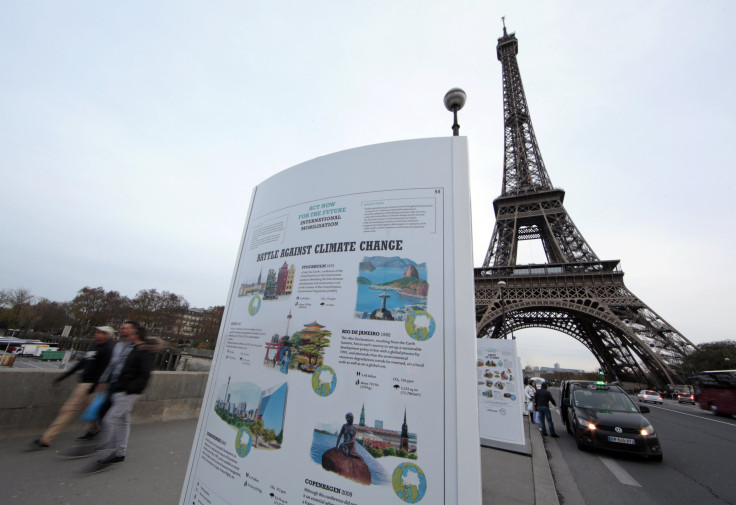World Climate Talks Begin Monday, But Will Commitments Make Any Difference?

With hopes as high as the security level on the streets of Paris in the wake of the Nov. 13 terrorist attacks there, world leaders planned to convene Monday outside the French capital to discuss pledges from almost 200 countries to cut carbon emissions. They’re expected to iron out core differences by as early as Dec. 5 at the request of French Foreign Minister Laurent Fabius, who expressed confidence a final version of a negotiated agreement released in October was already within sight.
“The first week [of the climate-change talks] will be devoted to reducing the number of options in the text,” Fabius said in an interview with the Guardian in the U.K. “I will ask that by [next] Saturday midday the text will be transmitted to me, the president of the COP [the Conference of the Parties], and at that moment everyone will know where we are and the procedure to follow. Obviously, I hope a maximum number of options will have been lifted, but I will have to take into account the situation at that moment.”
Even with a forthcoming final version of an agreement in hand, participants in the two-week United Nations conference aimed at countering climate change still face steep hurdles in formulating an effective strategy to combat the alarming rise in carbon emissions around the world. Fearing both the high economic toll and the political costs, the countries involved in the Paris negotiations have pledged only partial reductions in the greenhouse gases spewing from their vehicle tailpipes, factories, flatulent cows and burning forests.
The biggest polluters by far are China, the European Union and the U.S., which together would account for so much of a global carbon budget proposed by the scientific community that they would leave little of it for the rest of the world to divvy up. Although some countries, such as Bolivia, will be bringing up the carbon-budget measure -- seeking to cap the amount of greenhouse gases each nation could release based on its population size and other factors -- it’s widely accepted the proposal is as much a nonstarter now as it was at the U.N. climate-change talks in Stockholm in 2013.
Past climate-change negotiations have had little effect. An attempt by U.S. President Barack Obama to broker an agreement on limiting greenhouse-gas emissions fell apart in 2009 as countries quarreled over important provisions.
As in the past, the round of talks from Nov. 30 to Dec. 11 will be marked by a clear division between highly developed countries and developing nations. The more-industrialized countries are proposing an annual $100 billion public-private fund to help the less-industrialized nations cut their emissions and prepare for the adverse effects of global warming.
“The $100 billion by 2020 -- that’s the very first, critical step,” Christiana Figueres, executive secretary of the U.N. Framework Convention on Climate Change, told the Wall Street Journal. “It’s politically critical.”
However, comparatively poor countries say the U.S., the EU and China need to work faster to cut their own emissions before schooling them on sustainable development. For example, India is resisting efforts to switch to more costly alternative energy sources from the likes of fossil fuels, pointing to its enormous, impoverished population.
Even if world leaders are able to hammer out the final draft of a deal in the next two weeks, researchers anticipate temperatures will continue to rise and governments around the world will increasingly need to shift to damage control.
© Copyright IBTimes 2024. All rights reserved.






















